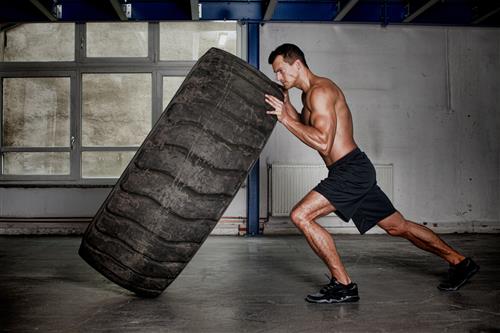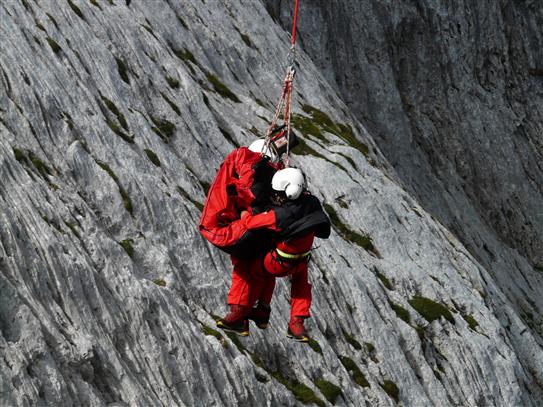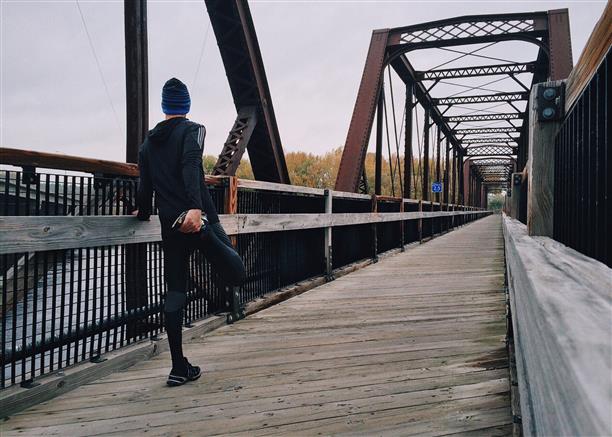There are three generally accepted types of confined space rescue: self-rescue, non-entry retrieval, and entry rescue. Just as with the hierarchy of hazard mitigation, confined space rescue should be approached with an ascending hierarchy in mind.
- Self-rescue is typically the fastest type and eliminates or at least greatly reduces the chance that anyone else will be put at risk. For these reasons, it is the first choice, but it is unrealistic to think that an entrant would be able to rescue themselves in all situations.
- Non-entry retrieval is the next choice. OSHA stipulates that non-entry retrieval must be considered as a means of rescue – more on that shortly.
- Entry rescue is the last choice, largely because it exposes the rescuers to the same hazards that the original entrant faced.

OSHA recognizes the inherent danger of entry rescue, which is why the organization mandates “retrieval systems or methods shall be used whenever an authorized entrant enters a permit space.” However, OSHA goes on to qualify this statement with two very important exceptions. OSHA requires non-entry retrieval, “unless the retrieval equipment would increase the overall risk of entry or would not contribute to the rescue of the entrant.” Let’s examine each of these two provisions more closely...
- Non-entry retrieval is required “…unless the retrieval equipment would increase the overall risk of entry.” For example, if the retrieval line would create an entanglement hazard that would impede the entrant’s ability to exit the space, then the retrieval system should not be used and entry rescue should be the choice.
- And non-entry retrieval is required unless the equipment “…would not contribute to the rescue of the entrant.” The key here is that the non-entry method employed must be viable. It must work when called into action.
For non-entry retrieval systems, we are relying on that retrieval line to exert forces on the entrant to pull them out of the space without help from any other device or human intervention within the space. It must perform without someone inside the space maneuvering the victim or otherwise providing assistance to the retrieval system. It has to work independently of any other forces other than what is generated from outside the space. This extremely important point is often overlooked and has resulted in many fatalities. Sadly, many of those fatalities were the would-be rescuers that attempted entry rescue when the retrieval system failed to do its intended job.
Situations that may render the retrieval system useless would be any configuration or obstruction inside the space that would prevent the system from pulling the victim clear of the space in an unimpeded manner. This could be pipework or obstructions on the floor for a horizontal movement. Likewise, pulling an unconscious victim around corners may render a retrieval system ineffective. If the entrant moves over any edge and down into a lower area offset from an overhead portal even at moderate angles, the retrieval system will probably not be able to pull an inert victim up and over that edge, even if the drop were only a foot or so.
It must be clearly understood that retrieval systems may quite possibly be applying forces on a limp human body, which, as harsh as this sounds, becomes a sort of anchor. It requires a very thorough and honest evaluation of where the entrant will be moving in the space in order to perform their planned work, and what obstructions or structural configurations are in that path. If there is any possibility that the system will not be able to pull an unconscious, inert victim along that path, then the retrieval system is NOT viable.
Okay, so you have done a thorough and honest evaluation of the space, its configuration, and internal obstructions and determined that there is a clear path from the entrant’s “planned” work area, which is offset ten feet from the overhead portal eight feet above. Clearly, the retrieval system will be able to pull the victim out of the space should the need arise. Enter human nature, and with that comes bad decisions. Murphy’s Law has a very nasty way of changing things for the worse.
What if, in the course of the planned work, our entrant drops his wrench down into a sump immediately adjacent to his work zone but further from the overhead portal? The fixed ladder down into the sump is only five feet and he can clearly see the wrench stuck in the sludge below. He asks for slack on the retrieval line, climbs down into the sump, bends down to grab his wrench and is nearly immediately rendered unconscious due to an undetected atmospheric hazard.
The attendant/rescuer sees that the entrant’s head and shoulders do not reappear and within several seconds calls to ask if he is ok, only to hear no answer. He calls several more times, but still no answer. He begins to haul with the retrieval system, which consists of a wire rope winch mounted to a tripod. The cable becomes tight and the tripod shudders and shifts slightly, then all progress stops. The would-be rescuer tries with all his might to pull the entrant’s limp body up and over the 90-degree concrete edge, but cannot.
In a panic, the attendant/rescuer climbs down into the space and over to the sump where he sees the entrant pulled tightly against the wall of the sump but not off the floor. He climbs down into the sump to attempt to lift the entrant’s 200-pound limp body up and over the five-foot wall. As soon as he bends down to cradle him, the hazardous atmosphere overcomes him also. Two fatalities later, we wonder how our non-entry rescue retrieval system could have failed us. It would not have, had human nature not interfered and caused two people to make bad decisions.
That story was intended to point out that things do not always go according to plan. Not only do we humans make bad decisions on occasion, but we also have accidents due to trips, slips, and falls that may send us to an area that the retrieval system may not work. Conditions inside the space may change in such a manner that it affects the retrieval system.
For all these reasons I implore you to evaluate the capability of the retrieval system to work not only when things go according to plan, but also to evaluate the system based on the “what ifs.” For the “what ifs” that involve bad decisions, that is a matter of training and communicating to the entry team why they cannot deviate from the work plan, even to fetch that dropped wrench. For the “what ifs” that include trips, slips, falls, or equipment failures, it may be time to consider a back-up plan, which may include an entry rescue capability.


.jpg)









 If that’s not motivation enough, its January resolution time! That said, remember that this is a journey… you probably aren’t going to see radical changes right away, so don’t get discouraged. Take pride in every day you work toward your fitness goals, and if you fall off the horse and into a hot fudge sundae one weekend, don’t despair – just get back on track and stay with it!
If that’s not motivation enough, its January resolution time! That said, remember that this is a journey… you probably aren’t going to see radical changes right away, so don’t get discouraged. Take pride in every day you work toward your fitness goals, and if you fall off the horse and into a hot fudge sundae one weekend, don’t despair – just get back on track and stay with it!


